
Thera variata, the spruce carpet, is a moth of the family Geometridae. It is found throughout Europe, North Asia and Japan. The common name spruce carpet is also used when referring to Thera britannica.

Incurvaria pectinea is a moth of the family Incurvariidae. It is found in Europe.

Coleophora serratella is a moth of the family Coleophoridae. It is found in Europe, Japan (Hokkaido) and North America.

Coleophora potentillae is a moth of the family Coleophoridae. It is found from Fennoscandia to the Pyrenees, and from Ireland to Poland.

Stigmella confusella is a moth of the family Nepticulidae. It is found from Fennoscandia to the Pyrenees, Alps and Bulgaria and from Ireland to central Russia.
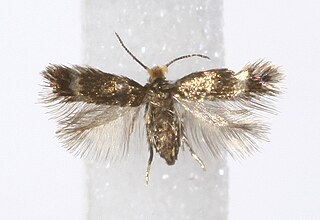
Stigmella betulicola is a moth of the family Nepticulidae. It is found in most of Europe, east to the eastern part of the Palearctic realm.
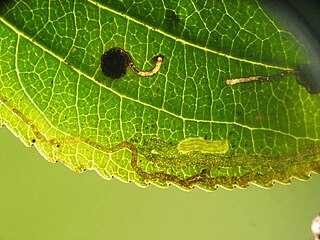
Stigmella catharticella is a moth of the family Nepticulidae. It is found in from Fennoscandia to the Pyrenees, Italy and Bulgaria, and from Ireland to Russia.
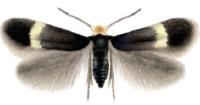
Stigmella centifoliella is a moth of the family Nepticulidae. It is found from Scandinavia to the Iberian Peninsula, Italy, Albania and Greece, and from Great Britain to Ukraine. It is also present in North Africa.

Stigmella floslactella is a moth of the family Nepticulidae. It is found in all of Europe, except the Balkan Peninsula and the Mediterranean islands.

Stigmella glutinosae is a moth of the family Nepticulidae. It is found in all of Europe.
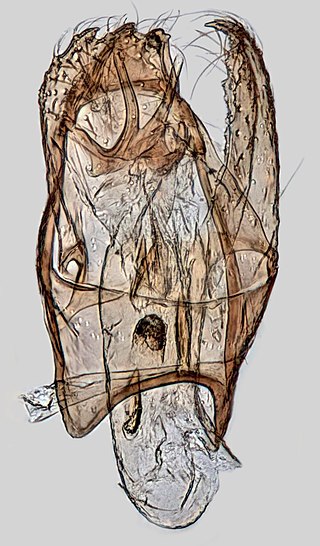
Stigmella obliquella is a moth of the family Nepticulidae which feeds on willow and can be found in Asia and Europe. It was first described by Hermann von Heinemann in 1862.

Coleophora adjunctella is a moth of the family Coleophoridae found in Europe.

Coleophora orbitella is a moth of the family Coleophoridae. It is found from Scandinavia and northern Russia to the Pyrenees and Italy and from Ireland to Poland and Hungary.
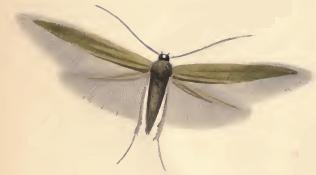
Coleophora paripennella is a moth of the family Coleophoridae. It is found in most of Europe, except the Iberian Peninsula and Balkan Peninsula.

Syncopacma taeniolella is a moth of the family Gelechiidae. It is found in most of Europe.

Nematopogon pilella is a moth of the Adelidae family. It is found in almost all of Europe, except Portugal, Spain and Slovenia.
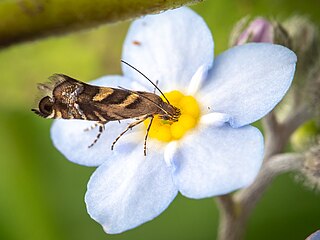
Glyphipterix tungella is a species of sedge moth in the genus Glyphipterix. It is endemic to New Zealand and is found throughout the country. Larvae mine the leaves of small sedges. Adults of this species are day flying and inhabit sheltered scrub or grassy areas and forest clearings.

Eulamprotes unicolorella, the unmarked neb, is a moth of the family Gelechiidae. It was described by Philogène Auguste Joseph Duponchel in 1843. It is found in almost all of Europe. The habitat consists of wastelands and dry open areas.
Eupselia melanostrepta is a moth in the family Depressariidae. It was described by Edward Meyrick in 1880, where it has been recorded from Victoria and Tasmania.
Eupselia theorella is a moth in the family Depressariidae. It was described by Edward Meyrick in 1880. It is found in Australia, where it has been recorded from New South Wales.
Content in this edit is translated from the existing Norwegian Wikipedia article at no:Pseudopostega crepusculella; see its history for attribution.
















